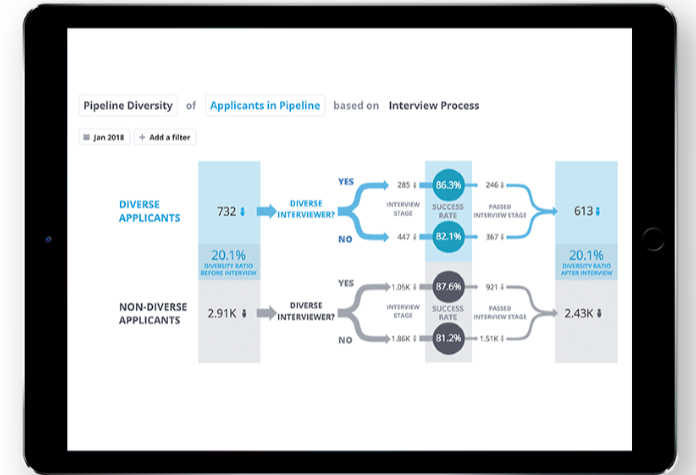
Visier added “what if” capabilities to its Visier People solution. The features are designed to help front-line managers prepare for future recruiting and retention needs.
The what if models are meant to “take the uncertainty out of the future,” said Ian Cook, the company’s vice president of people solutions. “Rather than trying to understand what actions an organizations could take, these insights help drive the actions they should take.”
New features in @Visier People help front-line managers prepare for future recruiting and retention needs, forecast D&I. #HR #HRTech #Recruiting Share on XThree what if models will be available in Visier People’s spring release, the company said:
- Projected headcount estimates headcount depending rates of employee starts and exits.
- Projected female ratio allows managers to examine how the proportion of women in a company’s workforce will change depending on application and hiring rates.
- Projected hires uses changing application and hire rates to forecast how head count targets can be achieved.
The company plans to add additional models in subsequent analytics suite updates.
Analytics Suite Heavy on D&I
Launched in May, Visier People provides organizations with up-to-date data on the state of their diversity and inclusion efforts. The SaaS analytics suite identifies opportunities and risks HR and business leaders can incorporate into their strategies for achieving D&I goals.
Visier People targets chief diversity officers and other executives. In its announcement, said only 35 percent of CDOs have employee demographic data to work with.
Soon after that, Visier unveiled an integration with TrustSphere that allows users to view organizational-network analysis and other workforce data side-by-side. That can help employers determine how well their D&I initiatives are working by, among other things, revealing how well workers and managers are developing diverse networks.
As diversity, bias and harassment have gained the attention of both employers and the public, a growing number of companies have turned to analytics to help them address their challenges. Still, many D&I specialists are somewhat skeptical about the impact data can have on addressing bias and similar issues. Access to data or not, they say, biased managers will likely continue to show bias in their decision-making.
At the same time, vendors continue to hear customers emphasize the importance of data tools that can inform their approaches to D&I. “The tools aren’t going to do it all for you but they can help you monitor where you are and help you understand how to increase your pipeline,” said an executive for a mid-size solutions provider. “At least with our customer base, we’re definitely seeing it as a top priority at the highest levels of organizations.”
Sign up for our newsletter here.
Image: Visier














